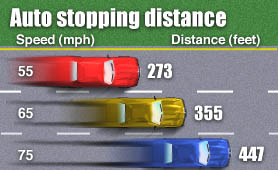
Here is VH1's Behind The Music unreleased script for the upcoming Foam Tide tribute...
In the late 1980s, Foam Tide had it all. Success. Popularity. No responsibilities. With the dawn of the '90s, however, Foam Tide fell into the same rut most of the other top metal bands from the '80s fell into - obscurity.
Foam Tide began their assault on the ears of Southern California rock music listeners in the summer of 1986 when guitarists Mike Petersen and David Smith, drummer Keith Hall, and his brother Colin (vocals), teamed up to form a powerful quartet. Each of the four attended Madison Senior High School, located in Clairemont, a middle-class suburb of San Diego. Smith knew the Hall brothers - nephews of the famous jazz guitarist Jim Hall - from their part-time jobs as the three worked through high school at a local Baskin-Robbins. Petersen knew Keith Hall from advanced science classes and weekend parties.

A 1986 publicity photo of Foam Tide, featuring (L to R) Petersen, Keith Hall, Smith and Colin Hall.
After a few jam sessions, the four took the name Foam Tide as a representation of pollution on the normally pristine San Diego beaches. Occasionally, actual foamy tides can be seen on the beaches to this day when a sewer line breaks off shore.
After honing their chops at a local church gymnasium in the summer of 1986, Foam Tide pooled their resources and rented an 8-track recorder and cut their first tape, Change Your Name, in the garage of a manager from Baskin-Robbins.
"We got a lot of flack about our name, Foam Tide, and we decided to refer to the tape as Change Your Name in response to people's wisecracks," Smith said. "That tape was pretty aweful."
So aweful, in fact, that just two copies of the seven-song tape remain today, and no friends or family were given one.
"We were just messing around and we pretty much had no idea what we were doing," said Petersen. "It was more like a demo than anything."
That experience, though, changed the band members' lives forever. Smith quit school and got a full-time job at Guitar Center, while Petersen maximized his guitar practice time. More importantly, the demands of the recording session from that summer instilled a passion in Smith and Petersen to further explore the elements of the home studio.
"Recording can really be addicting," Smith said. "Once you create one song, you're hooked. You always think there's a better tune waiting to come out."
In late 1987, Smith and Petersen began to assemble their own home studio. Together, they purchased a Boss Dr. Rhythm drum machine and a Fostex 260 4-track tape recorder. Due to the limitations of the 4-track, the pair were forced to use programmed percussion, instead of Keith Hall's live drums. Also, the two purposely steered into the vein of instrumental music, abandoning Keith's brother Colin on vocals. Foam Tide essentially became a duo.
In September 1988, Foam Tide finished their second recording, Bovine Madness. Petersen and Smith produced dozens of copies of the 10-song tape and soon had a small, but loyal, cult following. Led by insightful tracks such as 'Page 19', 'Veni, Vidi, Veni', 'Torpid Corpulence', and 'Six Days', the now-streamlined version of Foam Tide tapped into their individual songwriting abilities.
"We just seemed to be more at ease that time around," Petersen said. "We learned from the mistakes we made with Change Your Name."
Foam Tide didn't play any local gigs after Bovine Madness was released, but they did have a memorable experience playing live one night.
"We got kind of spoiled by drum machines after a while, so it was a real treat to be able to play live every now and then," Smith remembered. "So one night, we called up Keith and we went looking around for a place to jam. All's we needed were a couple of electrical outlets. Well, we eventually found a couple over at our old high school."
"But it was outside," continued Petersen. "We plugged all of our amps in by the football field and Keith set up his drum set and we started to play some songs. The next thing we know, some neighbors from across the street lined up their cars in their driveways so that they could turn on their headlights on us. I guess we were making way too much noise."
"I can't blame them," Smith said. "We always played really loud and it was pretty late at night. Besides, we were used to working in the studio, so it was always an adventure to get a song out live. We must have been pretty rusty."

Petersen (left) and Smith go for the "outdoors, clean-cut look" in 1989.
As Foam Tide was nearing completion with Bovine Madness, Smith quit his gig at Guitar Center to go back to school, so Petersen got him a part-time job where he already worked - as a ground crew member for a hot air balloon company in Rancho Sante Fe. The two working together at Pacific Horizon would soon spell the end of Foam Tide.
Throughout 1989 and 1990, Petersen and Smith literally spent most of their waking hours together. They car-pooled from Clairemont to their job, and in their off hours, they began working on the follow-up to Bovine Madness.
"We had a lot of great ideas for the next tape, but we always kept putting off recording them," Smith remembered. "We spent a lot of time partying and we just never got around to music."
"I'd see (Smith) all the time and we starting getting sick of each other," Petersen added. "We worked together and we partied together and the last thing I wanted to do was spend my free time recording songs with him. That's really how it was."
Of the 10 songs on Bovine Madness, only three were collaborations between Petersen and Smith. The others were literally solo efforts by either of the songwriters.
"That's what it was turning into," recalled Petersen. "The tape was basically two solo projects."
"I knew that our second tape was essentially gonna be his songs and my songs on one big tape," said Smith. "If I wrote a tune, I did 100% of it. The guitar, the bass, the keyboards, the drum machine programming. Everything. Why should I have Mike play on it? I knew what I wanted it to sound like, so I just figured I'd do everything myself. Mike did the same thing."
Almost immediately after finishing Bovine Madness, Smith and Petersen began recording their next tape, and chose the name The Electric Squirrel. They also realized that at their one-song-every-six-months pace, it wouldn't be done until late 1991 at the earliest. They buckled down and chose three completed songs and decided to master and release them as a preview for The Electric Squirrel.
"We had three songs in the bag and we wanted to give them out as Christmas gifts that year (1990)," Smith said. "The three songs totaled about 15 minutes, but we decided to put them on 60-minute tapes and fill up the rest with a bunch of talking. It was actually a lot of fun to make."
"It was a Bob and Doug McKenzie-kind of thing," Petersen recalled. "I remember going over to Dave's house one night in December and we got blitzed on gin 'n tonics and recorded ourselves just screwing around calling people. It was a pretty cool."
The music on the three-song tape, committment to annoying behavior, features Foam Tide at their best. Smith contributed '4th Down Friday' and 'Mai Tide', while Petersen penned 'White Trash Barrio'.
"Those songs kicked," said Smith. "We really started to master the equipment and produce good-sounding stuff."
Despite the sound quality displayed on the December 1990 release committment to annoying behavior, Foam Tide was unraveling. Instead of bearing down and finishing The Electric Squirrel, Smith and Petersen took a break from recording and continued their partying. Also, Petersen was just months away from graduating from college and was beginning to seek full-time employment. Smith soon took on another part-time job. Clearly, the issues surrounding The Electric Squirrel sessions were mirroring the unreleased brilliance of The Beach Boys/Brian Wilson ill-fated Smile album from 1967.
"Had we finished The Electric Squirrel, it would have been killer," Smith admitted. "The problem was, it would have been two solo albums and the whole recording process with another person was losing its fun. I wanted to do it all and so did Mike."
"Here's a typical day from like 1990 and 1991," Mike added. "I'd get up about 10 am and Dave would come over and we'd drink beers and watch MTV and play ping pong. We play a little music and then go to the beach before work (Pacific Horizon) and sober up and smoke cigarettes. We'd go to work for a few hours and then we'd drink champagne and smoke and race each other home on I-5. We got buzzed every night. It was fun, but it definitely took its toll."

Petersen and Smith had no idea that it takes longer to stop at higher speeds.
Petersen and Smith continued to record music throughout 1991, but two events in 1992 ended Foam Tide forever. Smith got into another serious relationship, while Petersen found employment in the Northwest and moved to Seattle. Petersen caught on with the then-surging Seattle music scene and recently was heading a new band, Swift Albro. Smith, meanwhile, has continued as the driving force behind the East Coast-based Del Lowell & the SMITHTONES.
"I still have about three or four songs that I recorded back in 1991 for Foam Tide that never saw the light of day," Smith said. "The quality is pretty bad, but there's some good ideas on there. Maybe some day I'll do something with them."
Despite the separation, Smith and Petersen remain good friends today, although they reside on opposite coasts. In fact, they were seen hanging out together in 1998 in San Diego at a Van Halen concert.
"We talk on the phone and we exchange Christmas cards," Petersen said. "I've sent Dave some of the music I've been working on and I have his last CD. We still hang out."
Is there a chance that Petersen and Smith will ever work together again?
"I think so," guessed Smith. "If we can ever work out our schedules, it would be fun to do a Foam Tide reunion."
back to the FOAM TIDE page




